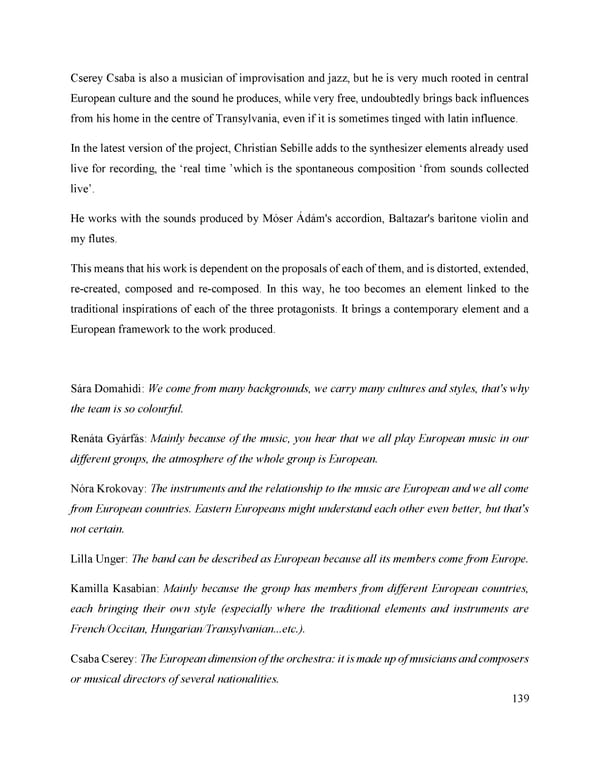Cserey Csaba is also a musician of improvisation and jazz, but he is very much rooted in central European culture and the sound he produces, while very free, undoubtedly brings back influences from his home in the centre of Transylvania, even if it is sometimes tinged with latin influence. In the latest version of the project, Christian Sebille adds to the synthesizer elements already used live for recording, the ‘real time ’which is the spontaneous composition ‘from sounds collected live’. He works with the sounds produced by Móser Ádám's accordion, Baltazar's baritone violin and my flutes. This means that his work is dependent on the proposals of each of them, and is distorted, extended, re-created, composed and re-composed. In this way, he too becomes an element linked to the traditional inspirations of each of the three protagonists. It brings a contemporary element and a European framework to the work produced. Sára Domahidi: We come from many backgrounds, we carry many cultures and styles, that's why the team is so colourful. Renáta Gyárfás: Mainly because of the music, you hear that we all play European music in our different groups, the atmosphere of the whole group is European. Nóra Krokovay: The instruments and the relationship to the music are European and we all come from European countries. Eastern Europeans might understand each other even better, but that's not certain. Lilla Unger: The band can be described as European because all its members come from Europe. Kamilla Kasabian: Mainly because the group has members from different European countries, each bringing their own style (especially where the traditional elements and instruments are French/Occitan, Hungarian/Transylvanian...etc.). Csaba Cserey: The European dimension of the orchestra: it is made up of musicians and composers or musical directors of several nationalities. 139
 Lost Analogue: Exploring Film, Music, and Interdisciplinary Methods in Education Page 139 Page 141
Lost Analogue: Exploring Film, Music, and Interdisciplinary Methods in Education Page 139 Page 141